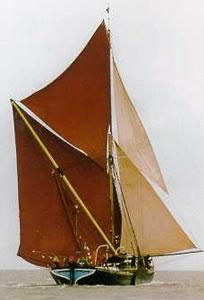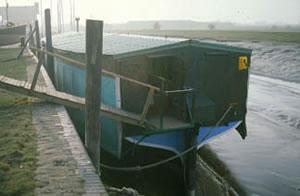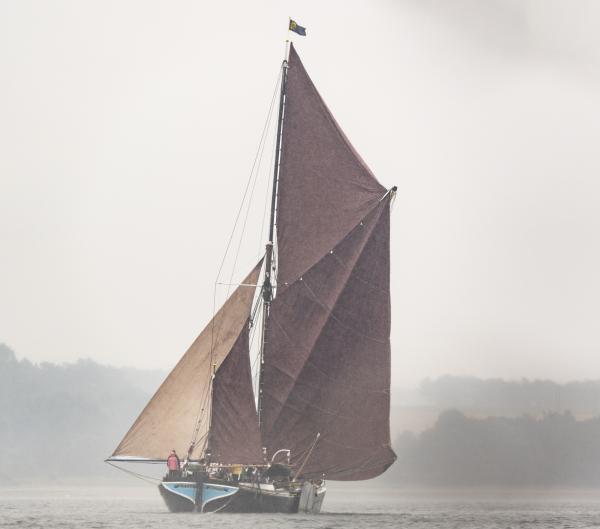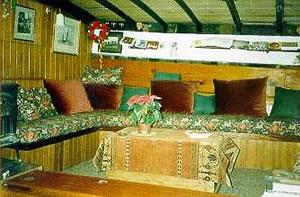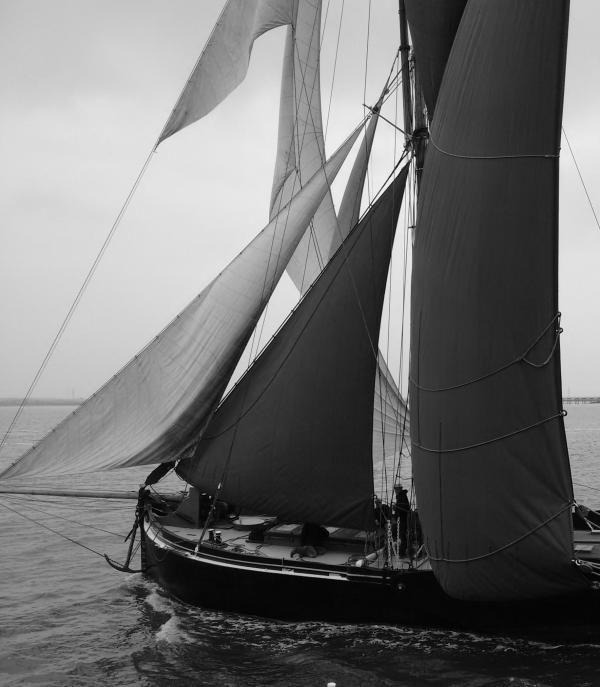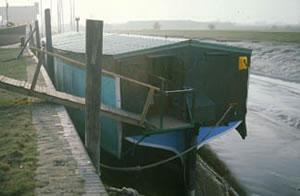

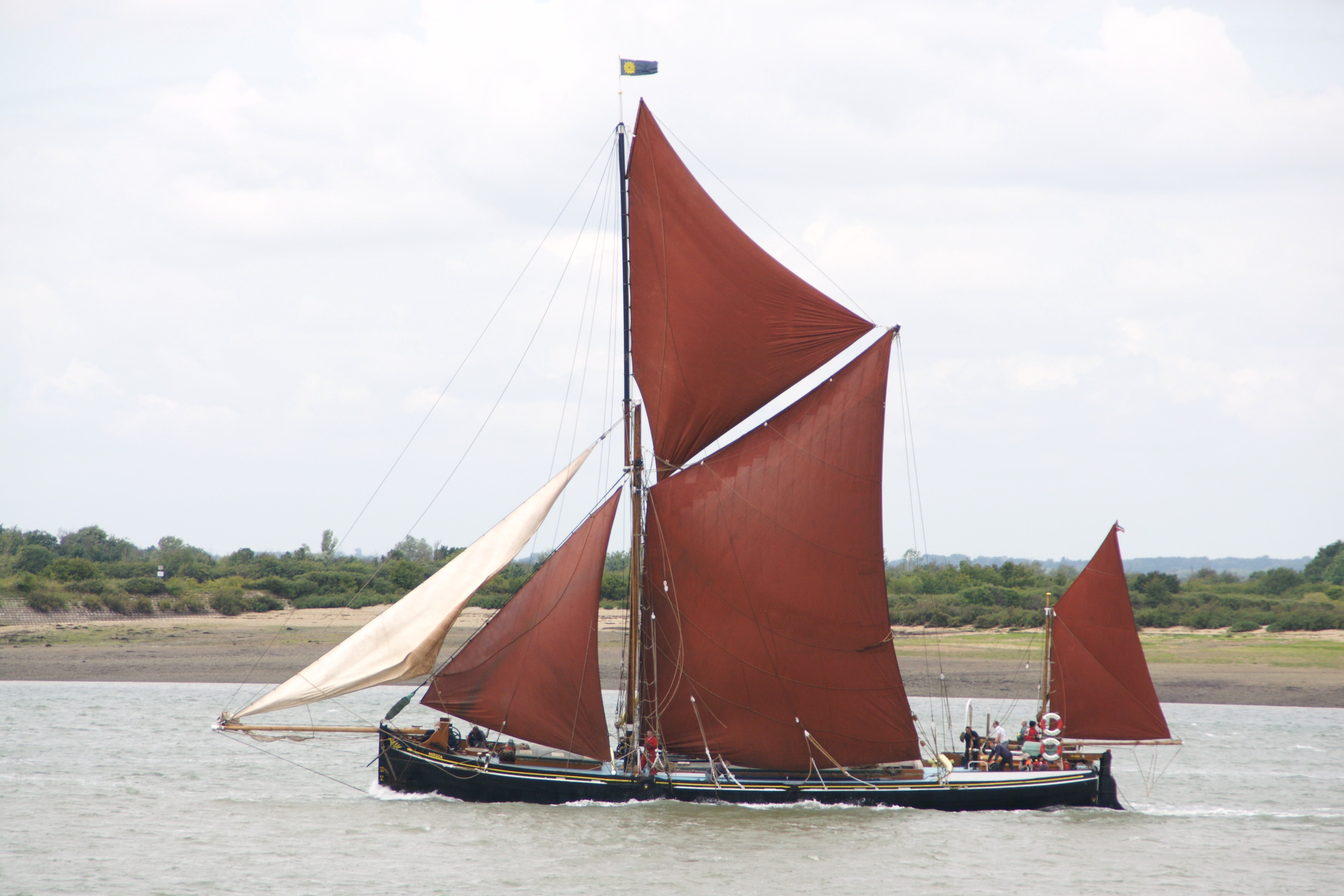
Previous names
- 1892 - 1947 Ready
Details
Construction
Dimensions
History
One of the few remaining spritsail barges never to have had an engine fitted, MIROSA claims to be the most original of the barges still afloat, with a full set of flax sails, manilla running rigging, and a full set of sweeps (oars), and is one of the very few still with wooden masts. She was built with a bowsprit, and this was reinstated in 1976. Her keel and chine planks are of elm, with pitch pine planks on the bottom and two-inch oak sides. This was doubled over with pitch pine, which happened when a barge was 30 or 40 years old. The hull is distinguished by the shapely shallow shape perfected by her builder, John Howard, of Maldon.
Launched on 28 June 1892 as the READY for John Gutteridge, of Vauxhall, London, shewas a stackie – carrying hay and straw from Essex and Suffolk to London for the city’s horses, and often returning with horse manure for the farms. After the First World War this trade declined and she probably went into timber, which was stacked high on deck like the hay had been. Her ownership passed to W W Keeble and then in the 1930s to Francis and Gilders, of Colchester, for whom she carried general cargoes, working from Maldon and Colchester, skippered by ‘Billy’ Austin. After the Second World War the Brightlingsea sailmaker Jim Lawrence was her skipper. In 1947 the owners sold her original name to Trinity House for use on a new lightship tender and she was renamed Mirosa. In 1954 she won the Thames and Medway barge matches, in the staysail class, possibly the first races she had ever entered.
She continued trading until 1955 when he was sold to Brown and Son, of Chelmsford, and de-rigged for use as a timber lighter in the Heybridge Basin, near Maldon – carrying timber to there from ships anchored off Osea Island.
In 1964 Clarence Deval had MIROSA rigged by Dilberry Clark and Bill Percy to go racing. He kept her for three years and then sold her to Alan Walker when she came to Kent as a ‘live-aboard’. Then Carrie Spender bought her and started racing her again in 1970. Jimmy Diddams, a legendary barge skipper, rigged her out and sailed her. In 1976 her present owners, Peter & Sally Dodds, bought her and based her at Iron Wharf, Faversham, where they lived aboard the vessel for 20 years. She has been slowly rebuilt by working the winter months only and sailing in the summer and has been maintained for 47 years in excellent condition by the owners at the Iron Wharf Boatyard. Her adventurous itinerary has taken her on regular trips down the Channel to the Isle of Wight, to the Humber, and through Tower Bridge, all without the help of an engine, at the time of writing MIROSA is the last wooden engineless sailing barge to have undertaken the Humber and Solent trips. MIROSA continues to engage in leisure charter work (taking 12 passengers and three crew) and is a regular racer in barge matches.
Source: Paul Brown, Historic Sail, The History Press.
Key dates
-
1892
Built at Maldon, Essex by John Howard as a stack barge named THE READY
-
1897-1947
Worked as a ‘Stackie’ carrying hay and straw, then timber after the First World War. Ownership passed to W. W. Keeble
-
1930s
Ownership passed to Francis and Gilders, of Colchester, for whom she carried general cargoes, working from Maldon and Colcheste
-
1947
Owners sold her original name to Trinity House for use on a new lightship tender and she was renamed MIROSA
-
1954
Won the Thames and Medway barge matches in the staysail class
-
1955
Ceased trading. Sold to Brown & Son of Chelmsford and de-rigged for use as a timber lighter
-
1964
Clarence Deval had the vessel re-rigged by Dilberry Clark and Bill Percy to go racing
-
1967
Sold to Alan Walker as a houseboat based in Kent
-
1970
Sold to Carrie Spender who raced her again. Legendary barge skipper, Jimmy Diddams, rigged and sailed her
-
1976
Sold and moved to Iron Wharf, Faversham for leisure and charter work
-
2011
Awarded a grant of £1,000 from NHS-UK towards the cost of a new mainsail
Grants
-
January 2012
A Sustainability Grant of £1000 for sails was made from the Strategic Development Fund of National Historic Ships UK
Sources
Carr, Frank, Sailing Barges, 1971
Hugh Perks, Richard, Sprts'l: A Portrait of Sailing Barges and Sailormen, Conway Maritime Press, 1975
The Last Berth of the Sailorman, Society for Spritsail Barge Research, 1987
Wood, D G, Barges Sailing Today: Sailing Barge Information Pamplet No: 1, Society for Spritsail Barge Research, 1995
Classic Boat: Barge racing onboard Mirosa, August 2004
Classic Boat: Transport Trust Awards - Life achievement award for Thames bargeman, August 2012
Classic Boat: Pieces of eight, July 2006
The Times (19 June 2019), They think it's all ochre - photo of the Mirosa moored on the Swale estuary by Alan Payton/ Alamy Press
Own this vessel?
If you are the owner of this vessel and would like to provide more details or updated information, please contact info@nationalhistoricships.org.uk

